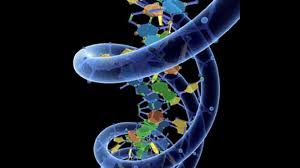

New study published in the Journal of Endocrinology and Metabolism identified a novel gene mutation in patients before the onset of type 2 diabetes which is associated with severe cardiometabolic dysfunction due to its effect on adiponectin.

Researchers commented “Low adiponectin levels have been previously associated with hypertension, carotid intima-media thickness, and myocardial infarction in men, and recently it has been proven that low adiponectin levels lead to increased foam cell formation and accelerated cardiovascular disease in diabetic subjects.”

Their prospective analysis of 14 hypoadiponectinemic (<3 mcg/mL) and 686 normoadiponectinemic young adults (aged 23 to 25 years) from birth identified the heterozygous ADIPOQ p.M40K mutation in one hypoadiponectinemic man (2.4 mcg/mL) and three other family members. The carriers of the mutation demonstrated reductions in high-molecular weight-to adiponectin ratio vs. controls (9.4% vs. 56.6%; P<.05) and family members who were not carriers (9.4% vs. 42%; P=.05), according to data.
In the adipose tissue of the proband, mRNA and protein levels were increased (2.3-fold and 1.6-fold, respectively), researchers wrote. However, the high-molecular weight-to-total adiponectin ratio of adiponectin decreased 3.3-fold.

Expressions of the ADIPOR1 (sixfold) and ADIPOR2 (1.2-fold) were significantly down-regulated in the adipose tissue of the proband. The proband’s cardiometabolic phenotype progression was categorized as: born small for gestational age and adolescence-onset obesity; insulin resistance (HOMA-IR, 4.7) and dyslipidemia at age 25 years; decreased high-molecular weight adiponectin (0.24 mcg/mL=10%), hypertension (180 mm Hg/120 mm Hg), steatosis (fat liver=40%), increased carotid intima-media thickness at age 31 years, and type 2 diabetes (HbA1c=6.6%) at age 34 years. According to the researchers, all of the affected family members displayed features of the metabolic syndrome.

 New study published in the Journal of Endocrinology and Metabolism identified a novel gene mutation in patients before the onset of type 2 diabetes which is associated with severe cardiometabolic dysfunction due to its effect on adiponectin.
New study published in the Journal of Endocrinology and Metabolism identified a novel gene mutation in patients before the onset of type 2 diabetes which is associated with severe cardiometabolic dysfunction due to its effect on adiponectin.